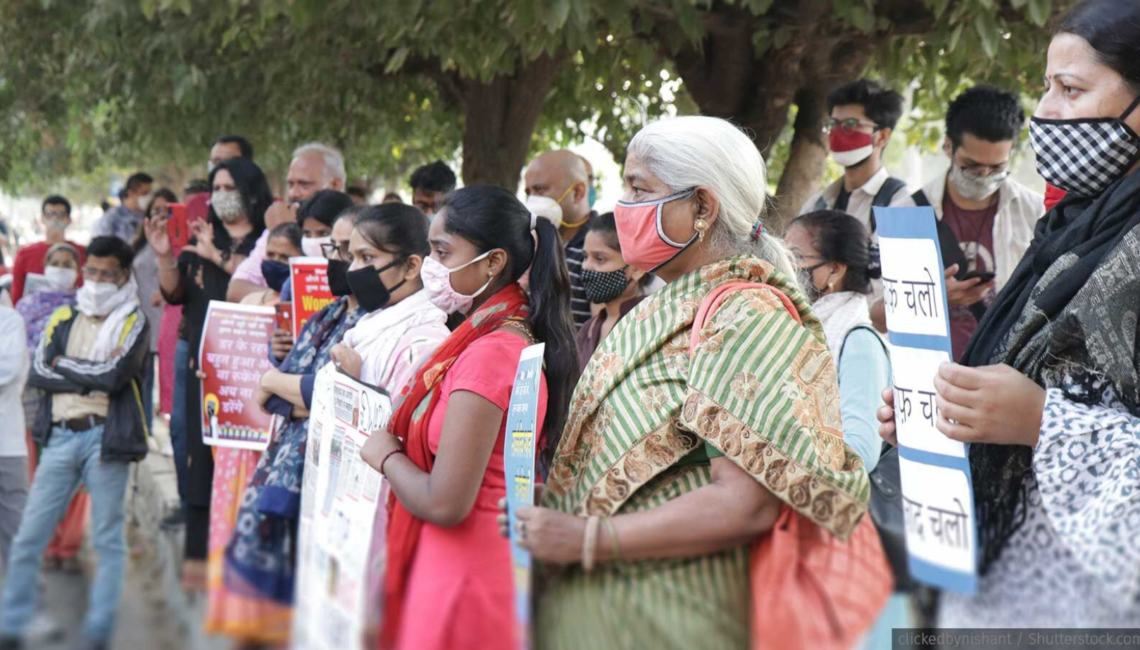The pandemic dealt a further blow to India’s already low Female Labour Force Participation Rate. When the lockdown was imposed two years ago, women were the first to lose their jobs, and they have yet to return to the workforce. According to the Centre for Monitoring Indian Economy (CMIE), the female labour force participation rate hit an all-time low of 9.4 percent between September and December 2021, the lowest since data was first compiled in 2016.
To understand this historic low in female labour force participation, we must consider a long-standing issue: the safety of women in workplaces. Every woman deserves a safe and discrimination-free working environment, with special attention needed for those in the informal and unorganized sectors, where the pandemic exacerbated the situation.

India’s informal economy encompasses a range of activities, with the agricultural sector having the highest level of informal employment, followed by manufacturing, trade, and construction. In rural areas, 96 percent of jobs are informal, with female informal employment at 98 percent compared to 95 percent for men. In urban India, 79 percent of jobs are informal, with 82 percent of female workers engaged in informal employment compared to 78 percent of urban male workers.
Statistics reveal that women are more likely to work in the informal sector in both rural and urban areas, and they are also more likely to be informal workers in the formal sector. However, little has been done to address the violence women face in the informal sector, which can range from harassment to sexual assault and rape. This violence is often linked to a male-dominated workplace, harassment by labor contractors, and a lack of basic amenities for women at work. Some studies indicate that women in the informal sector experience sexual harassment in their workplaces.

A recent study by Oxfam India on tea plantation workers illustrates the hierarchical nature of their jobs, the migrant status of workers, and the lack of alternative job opportunities for female tea pluckers, all of which contribute to the normalization of workplace violence. Inadequate facilities like canteens and toilets, typically found in factories dominated by male workers, are missing in the fields. Due to the presence of mostly male supervisors, women seek privacy far from their colleagues, making them vulnerable to sexual abuse or attacks by wildlife. There have also been reports of forced hysterectomies among women sugarcane cutters, in addition to domestic violence and various forms of abuse.
The challenging working conditions are compounded by the absence of proper grievance redressal mechanisms and women’s limited access to them. Existing laws such as the Sexual Harassment of Women at Workplace (Prevention, Prohibition and Redressal) Act 2013, Criminal Amendment Act 2013, and Protection of Women from Domestic Violence Act, 2005 are poorly implemented and do not adequately address the challenges faced by women in the informal sector. The Local Complaints Committee structure under the Sexual Harassment of Women at Workplace (Prevention, Prohibition and Redressal) Act 2013, which could have been an effective body, is virtually non-functional.

In the post-pandemic era, the pursuit of inclusive growth should prioritize efforts to make workplaces in the informal sector safe for women. Immediate measures that can be implemented include raising awareness among informal sector workers about gender-based violence and explaining relevant laws in simple terms, ensuring functional complaints committees, and educating local labor contractors on how to handle cases of sexual harassment in workplaces. These basic steps can be facilitated with technical support from local women’s rights organizations. Additionally, the government should enhance the enforcement of existing laws and allocate more resources to improve workplace safety.


